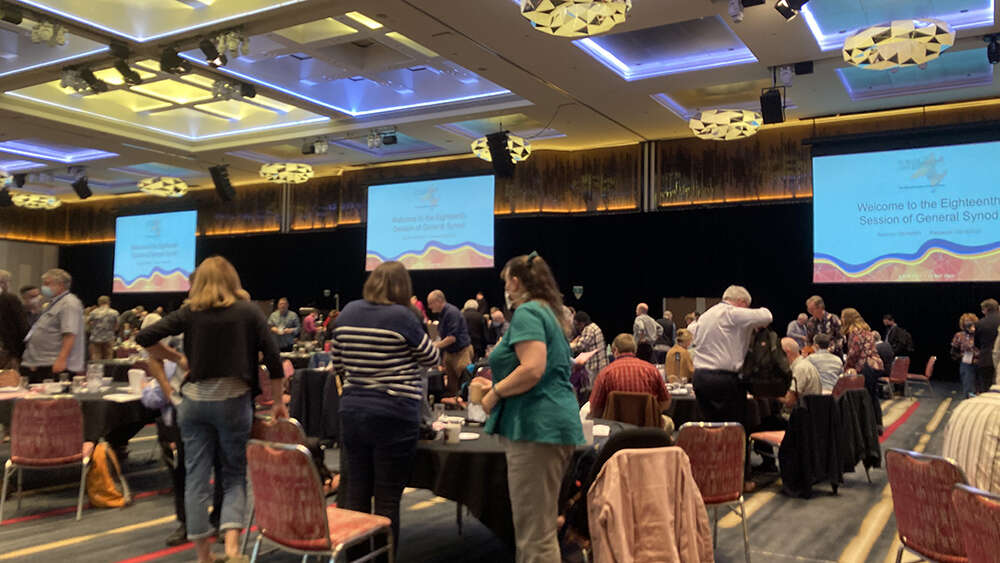“The results of yesterday’s elections to the Standing Committee of the General Synod (GS) reveal that the Conservatives now have almost complete control over the national church,” writes longtime Anglican commentator Muriel Porter in The Guardian and The Conversation.
“Progressive Anglican clergy and laity from across the country who had long served on the committee have been fired. From now on, the central structures of the national church will prosecute a virtual copy of Sydney’s conservative stance on same-sex marriage and other issues.”
Porter, a long-term writer with a forward-thinking attitude, rightly draws attention to the election results. They show that conservatives are taking over important committees. However, the House of Bishops and the Appellate Body have not changed hands.
But a slow “conservation” of the church is progressing. The House of Bishops will likely have a conservative majority when the GS meets in four years. The membership of the Tribunal is also changing.
This does not amount to a complete takeover because neither the left nor the right can do this. Unusually for Anglicanism, dioceses in Australia enjoy a high degree of autonomy – which in the past meant that the Diocese of Sydney retained its evangelical character despite having a huge Anglo-Catholic and progressive majority in most other dioceses.
Those numbers are shifting. Soon the bishops in progressive dioceses will try to defend their borders against the conservative majority of the national church.
Conservatives must consider their response to this, possibly by planting churches in progressive dioceses. These churches may be unofficial Anglican in a parallel structure or members of the burgeoning Fellowship of Independent Evangelical Churches.
A morning tea discussion between progressive and conservative leaders led to an amended motion confirming marriage between one woman and one man as the doctrine of the Anglican Church of Australia. This motion protects anti-discrimination legislation.
Another group led to a motion thanking the Appellate Body (AT) for its work and the result of two agencies that had prepared reports that the AT disagreed with.
“I count you before I count you out” is a principle that Bishop Matt Brain (Bendigo) encouraged, urging that the different spiritual cultures of the Church “build on what we have in common.” The motion described any divorce as “reducing ourselves.”
“Where we disagree, we must disagree in Christian love and charity.” – Dorothy Lee.
Dorothy Lee listed doctrines in which the GS has “a great deal of unity,” indicating 90 percent of doctrinal agreement. “Where we disagree, we must disagree in Christian love and charity.”
Mark Thompson (Sydney), principal of Moore College, has tabled an amendment to insist that “the unity here is anchored in the God-breathed words of Scripture.” The amendment was passed very narrowly.
But a motion not to introduce the activity was passed by Matthew Anstey (Adelaide). From this observer’s point of view, the difficulty was whether the action should demand that “theological cultures” be respected in the church.
The Aboriginal bishop, Chris McLeod, called for Australian governments to raise the age of criminal responsibility from 10 to 14 years. He emphasized the effect of early incarceration on First Nations youth: “It will follow them all their lives” and “train them in crime.” Our society would be better off spending the cost of incarcerating a child at $500,000 per child per year. “Jesus said, ‘Let the children come to me and don’t stop them,'” McLeod quoted saying.
“How many of us would know that the age of criminal responsibility is only ten?” – Peter Sandeman
“How many of us would know that the age of criminal responsibility is only ten?” asked Peter Sandeman (Adelaide), who endorses the motion. “A recent survey found that only 7 percent of Australians could correctly identify that t the age for criminal responsibility.
“While Aboriginal youth (under age up 6 percent of the population, 50 percent of youths under some form of supervision are Indigenous youth, and three in five of those are Indigenous youth.”
Zac Veron (Sydney) opposed the motion, citing the case of James Bulger, a two-year-old who was murdered in 1993 by two ten-year-old boys.
The motion passed quickly.
Thirty years after the first female priests were ordained, a motion noted that by 2022, 23 percent of the clergy would be women, recognizing their significant contribution (and 33 percent of the GS).
Archbishop Kay Goldsworthy and other women ordained 30 years ago were in attendance.
